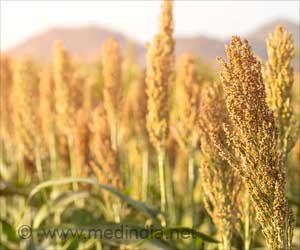Rising Demand for Bioinsecticides Reflects a Transition to Eco-Friendly Agriculture

The uprise in the bioinsecticide market reflects a broader shift toward eco-friendly and sustainable agricultural practices. Increased awareness of the harmful effects of traditional chemical insecticides on human health, non-target organisms, and ecosystems is a significant driver.
The popularity of integrated pest management (IPM) techniques has contributed to the growing need for bioinsecticides. IPM reduces reliance on chemical solutions by emphasizing diverse pest management strategies within a holistic framework. Bioinsecticides, derived from living organisms such as fungi, bacteria, and plants, align well with the principles of IPM. They offer effective tools for managing pest populations and can help prevent the development of resistance, a common issue associated with chemical pesticides.
Bioinsecticides are considered a favored option for preserving biodiversity and ecological balance in agricultural settings. They exhibit precise targeting capabilities and minimal adverse effects on beneficial insects like pollinators and natural predators.
Advertisement
Bioinsecticides are gaining momentum globally due to their efficiency and compatibility with modern agricultural practices. Heightened awareness of food quality and safety plays a crucial role in driving their acceptance. Bioinsecticides offer a compelling solution to concerns about potential health risks associated with chemical residues in food, aligning with the demand for safer and healthier produce.
Bioinsecticides: A Climate-Resilient Solution for Agricultural Pest Management
Addressing the urgent need to address the impacts of global warming on agriculture is another factor boosting bioinsecticide demand. Pests are adapting and expanding in response to unpredictable weather conditions, posing significant threats to crops. Bioinsecticides provide flexible and adaptive pest management techniques that can effectively address changing pest behaviors resulting from climate changes. Their popularity as an environmentally friendly and efficient pest control method is further enhanced by their versatility, as they are often derived from living organisms such as beneficial insects and microorganisms.
In terms of the source of bioinsecticides, microbials are anticipated to be the most sought-after, with an expected CAGR of approximately 10.9% in the assessment period. This segment has shown steady growth at a CAGR of 12.4% in the historical period. Microbial bioinsecticides align with the global movement towards eco-conscious and sustainable agriculture, as they are derived from naturally occurring microorganisms such as bacteria, fungi, and viruses.
Small-scale manufacturers are also focusing on educational initiatives to inform farmers, agronomists, and consumers about the benefits of using bioinsecticides. Workshops, seminars, and online resources are used to demonstrate proper application methods and highlight the environmental advantages of these products.
Source: Medindia
Source link
#Rising #Demand #Bioinsecticides #Reflects #Transition #EcoFriendly #Agriculture



